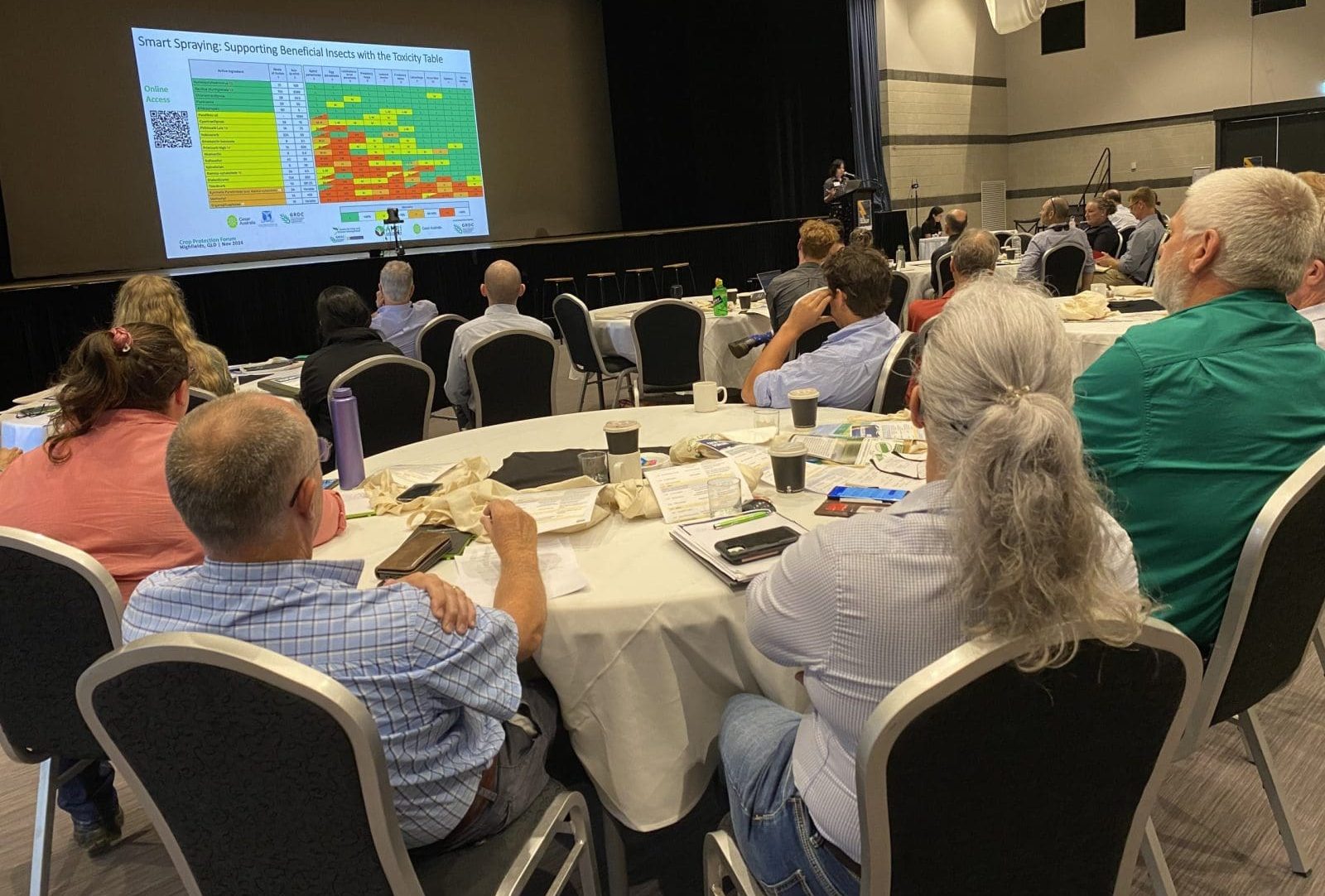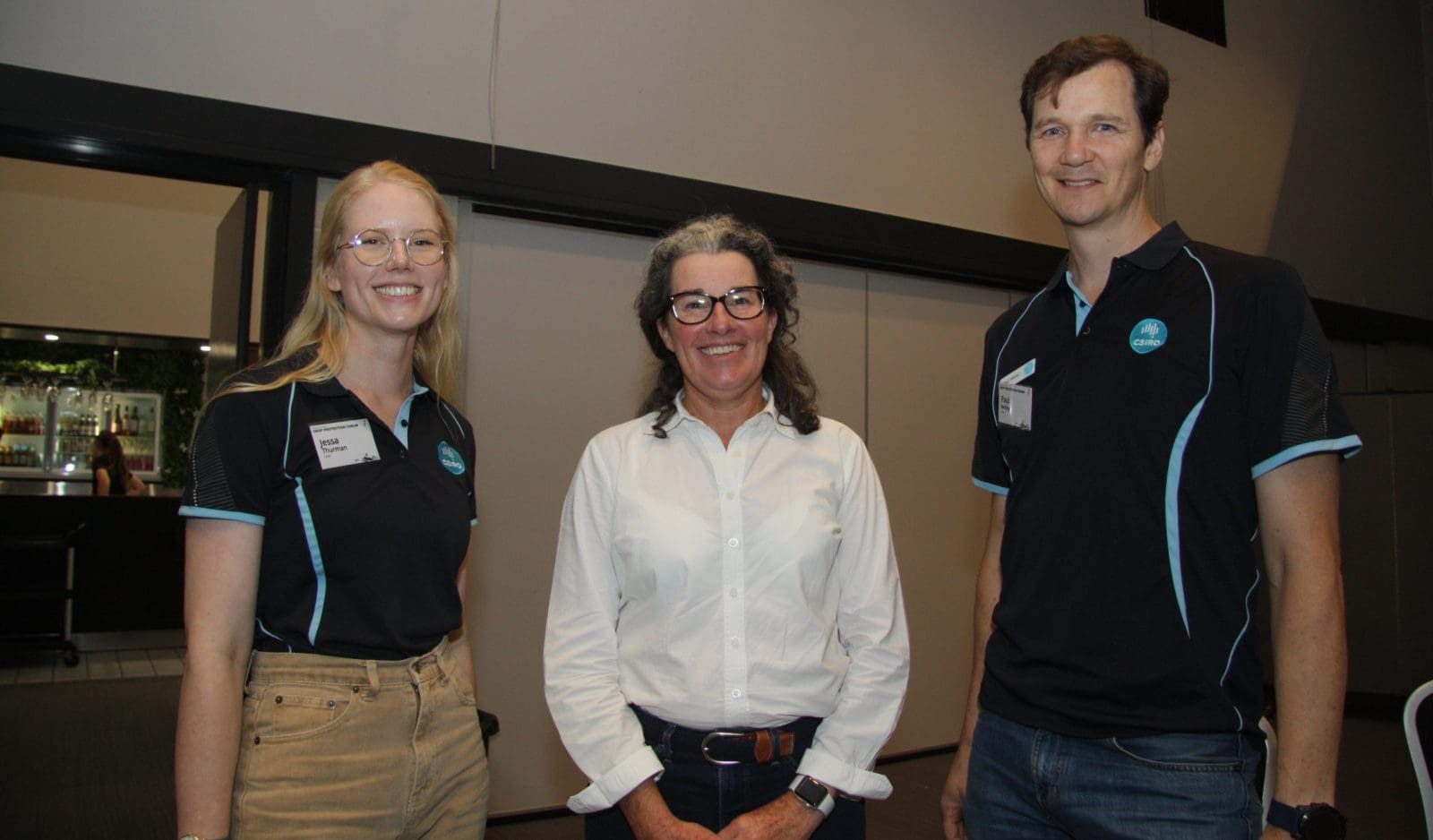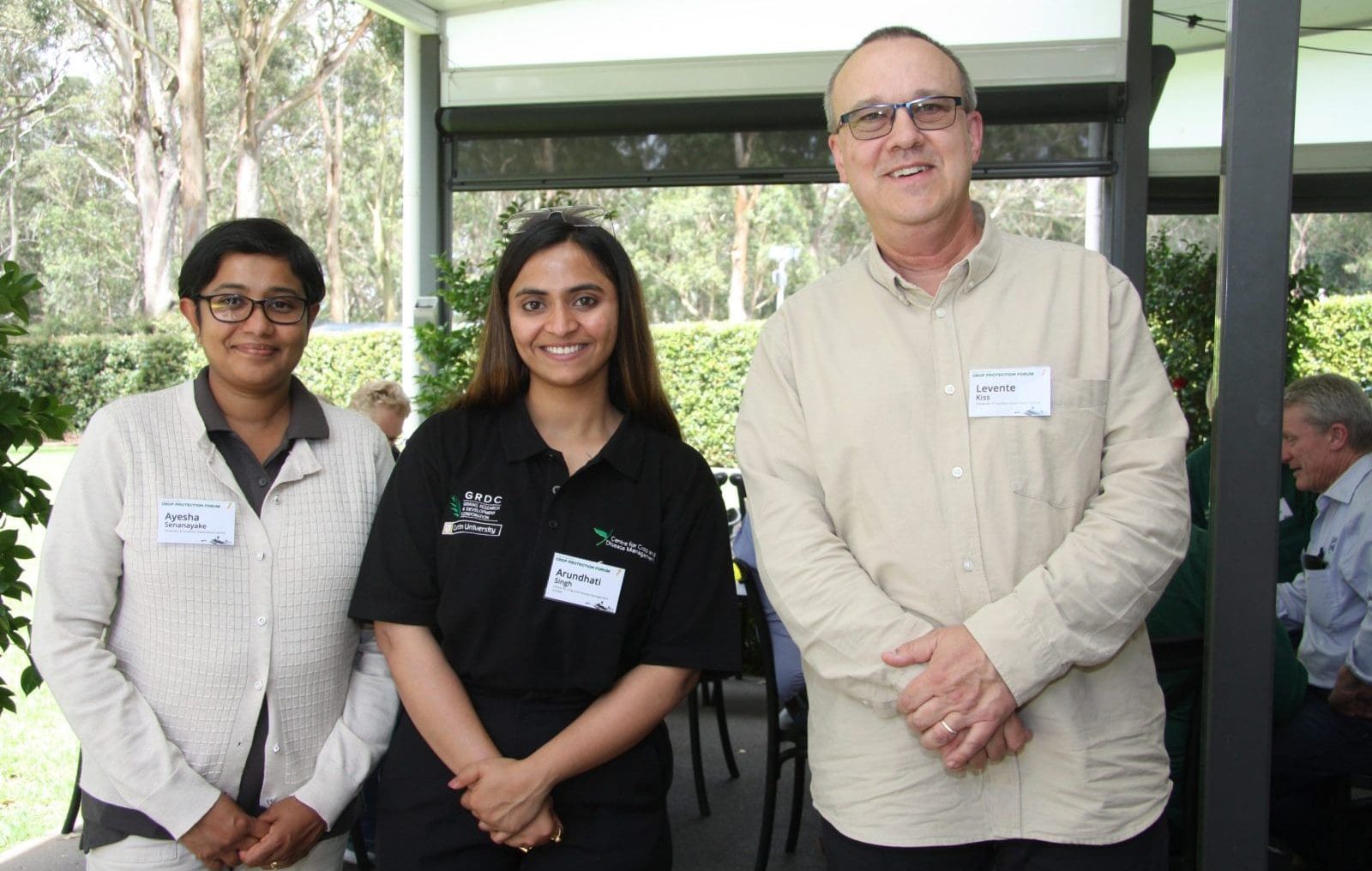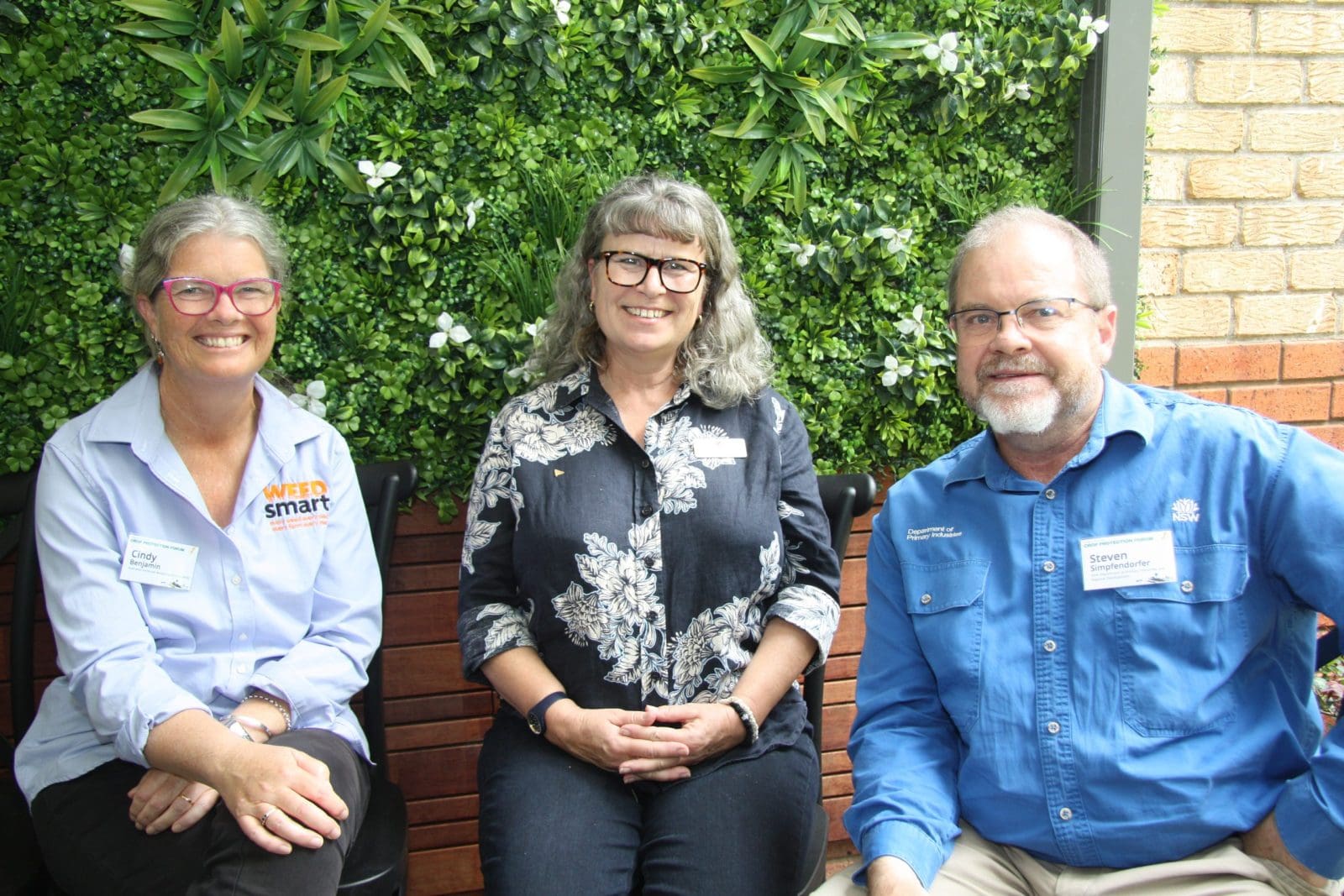
Cesar Australia extension scientist Lilia Jenkins runs through the toxicity table which helps growers make informed decisions about the best way to get on top of troublesome pests with minimal damage to beneficial insect populations.
SPECIALISTS from across Australia gathered at Highfields near Toowoomba today for the annual Crop Protection Forum to find out about the latest in fungicides, herbicides, and insecticides.
Organised by the Centre for Crop and Disease Management and involving also the Australian Herbicide Resistance Initiative, Cesar Australia, and the Grains Research and Development Corporation, it brought together more than 80 researchers and agronomists.
The symposium has a title each year, and this year’s was Storm of Resistance.
AHRI manager Lisa Mayer was one of many delegates over from Western Australia for the eleventh event. It was held last year in Adelaide, and held only once before in Queensland, at Dalby in 2017.
“We run them all over the country because it’s about bringing different ideas together,” Ms Mayer said.
“The idea is to collaborate across different crops and problems to look at issues more holistically.”
Ms Mayer said the event has facilitated some important collaborations and understandings over the years, as it allows those who specialise in crop protection to meet with peers from other areas in a focussed environment.
The one-day program covers everything from perennial to one-off topics.
The hot issue of cropping with less paraquat was covered by The University of Adelaide’s Professor Christopher Preston, while Philip Armytage of AgBiTech Australia spoke about fall armyworm, which made its presence felt in summer and winter crops this year.
Other speakers looked into aspects of fungicide and herbicide resistance, genomics, new technology for weed control, and insecticide-resistant aphids.
The forum also provided a place to promote the toxicity table which helps growers factor in the value of beneficial insects in cropping systems.
“In Victoria and New South Wales this year, we saw a really big outbreak of green peach aphid,” Cesar Australia’s extension scientist Lilia Jenkins said, adding that spraying them with a non-optimal insecticide led in some cases to secondary outbreaks of diamondback moth.
“When you’re going out to spray, think about using this table and think about what the actual cost of spraying is to you.”

Syngenta technical manager Sean Roberts, Wagga Wagga, and locals Vicchem business development manager Jim Wark and Syngenta territory sales manager Matt Kenny.

CSIRO Brisbane-based researchers Dr Jessa Thurman and Dr Paul Melloy with consultant Vicki Green, Felton, at centre.

CCDM research associate Leon Hodgson, Cesar Australia extension scientist Lilia Jenkins, and Australian Fungicide Resistance Extension Network coordinator Nola D’Souza.

AHRI’s Prof Ken Flower and ICAN senior consultant Mark Congreve.

Agronomists Millie Bach, Elders Dalby, and Sarah Wilson, Syngenta Toowoomba.

Locals Qld DPI researcher Dr Michael Widderick with Corteva Agriscience principal biologist Greg Wells.

Prof Christopher Preston was one of the 2024 Crop Protection Forum’s presenters.

The University of Melbourne’s Prof Ary Hoffman with FMC Toowoomba’s product development manager in R&D Geoff Cornwell.

PhD students Ayesha Senanayake, UniSQ and Arundhati Singh, CCDM with UniSQ Centre for Crop Health director Prof Levente Kiss.

WeedSmart’s Cindy Benjamin, and NSW DPIRD researchers Dr Natalie Moore, Grafton, and Dr Steven Simpfendorfer, Tamworth.

Cesar Australia’s Dr Evatt Chirgwin presents at the 2024 Crop Protection Forum.
Grain Central: Get our free news straight to your inbox – Click here

HAVE YOUR SAY